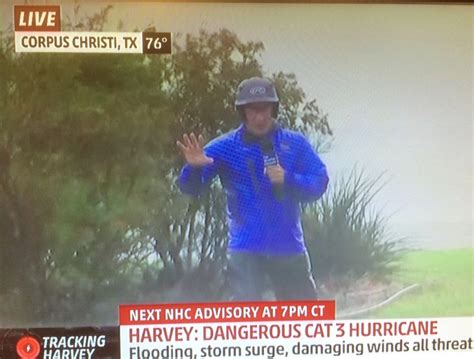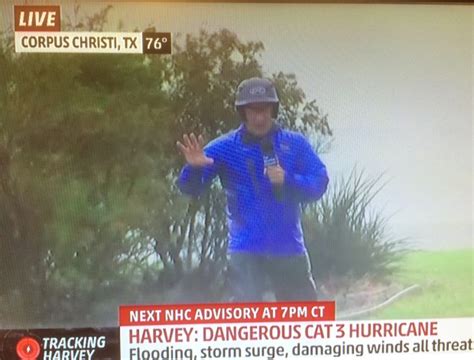
A potentially unprecedented weather event is looming, with The Weather Channel’s Jim Cantore warning of a storm system poised to impact the United States that could be unlike anything seen in recent memory. This complex and multifaceted threat combines several dangerous elements, including the possibility of a significant ice storm, heavy snowfall, and severe thunderstorms, creating a challenging forecast scenario across a wide swath of the country.
The precise track and intensity of the storm remain uncertain, but meteorologists are closely monitoring the developing situation, emphasizing the need for residents in affected areas to prepare for a range of potential hazards. The convergence of various weather phenomena is what makes this system particularly noteworthy and difficult to predict. “It’s just a very, very complex storm, and I think we’re gonna be talking about it for the next five to seven days,” Cantore stated.
The National Weather Service and other meteorological agencies are issuing regular updates and advisories as they refine their models and gain a clearer understanding of the storm’s potential impact. The public is urged to stay informed, heed warnings, and take necessary precautions to protect themselves and their property. The specific areas at risk and the timing of the impacts are still being determined, adding to the sense of urgency and concern.
A Convergence of Threats
This impending weather system is not characterized by a single, dominant threat, but rather a confluence of several potentially dangerous elements. The possibility of a major ice storm is a significant concern, particularly in areas where temperatures hover around the freezing mark. Ice accumulation can lead to widespread power outages, tree damage, and hazardous travel conditions. Even a thin layer of ice can make roads and sidewalks treacherous, increasing the risk of accidents and injuries.
In addition to the ice threat, heavy snowfall is also anticipated in certain regions. The amount of snow and the specific areas that will be most affected are still subject to change, but meteorologists are closely watching the development of low-pressure systems that could bring significant accumulations. Heavy snowfall can also disrupt travel, close schools and businesses, and create challenging conditions for emergency responders.
Furthermore, the storm system also has the potential to trigger severe thunderstorms in other parts of the country. These storms could bring damaging winds, large hail, and even the possibility of tornadoes. The risk of severe weather adds another layer of complexity to the forecast and underscores the need for residents to be prepared for a variety of potential hazards.
Cantore emphasized the unusual nature of this multifaceted threat, stating, “This is kind of a unicorn event for a lot of folks…This is a very complex, amplified pattern.” This “unicorn event” designation highlights the rarity and potential severity of the storm, urging the public to take the warnings seriously.
Regional Breakdown of Potential Impacts
While the exact details are still unfolding, preliminary forecasts suggest that different regions of the United States could face distinct types of impacts from this storm system. The specific areas at risk will depend on the storm’s eventual track and intensity, but here’s a general overview of potential regional impacts:
-
Midwest: The Midwest is likely to face a combination of threats, including heavy snowfall, ice accumulation, and strong winds. The exact mix of these hazards will depend on the precise location and timing of the storm. Travel disruptions are highly probable, and residents should be prepared for power outages and hazardous conditions. Cities like Des Moines, Iowa; Chicago, Illinois; and Indianapolis, Indiana, could be particularly vulnerable.
-
Northeast: The Northeast could also see a mix of snow, ice, and rain, with the potential for significant disruptions to travel and daily life. The I-95 corridor, including major cities like New York City, Philadelphia, and Boston, could be affected by the storm. The specific type of precipitation will depend on the temperature profile, but even a small amount of ice can cause major problems.
-
South: The South could experience severe thunderstorms, including the risk of damaging winds, large hail, and tornadoes. The potential for severe weather adds another layer of concern to the forecast, and residents should be prepared to take shelter if necessary. Areas from Texas to Florida could be at risk.
-
Central Plains: The Central Plains might see a combination of heavy snow and blizzard conditions depending on the storm track. Strong winds combined with heavy snowfall could lead to near-whiteout conditions and make travel impossible.
Preparing for the Storm
Given the potential for a wide range of impacts, it’s crucial for residents in affected areas to take steps to prepare for the storm. Here are some key preparedness measures:
- Stay Informed: Monitor local weather forecasts and heed warnings from the National Weather Service and other meteorological agencies. Pay attention to specific advisories and alerts for your area.
- Prepare an Emergency Kit: Assemble an emergency kit that includes food, water, medications, a flashlight, a battery-powered radio, and other essential supplies. Make sure you have enough supplies to last for several days in case of power outages or travel disruptions.
- Charge Electronic Devices: Fully charge your cell phones, laptops, and other electronic devices in case of power outages. Consider investing in a portable power bank to keep your devices running.
- Stock Up on Supplies: Make sure you have enough food, water, and other supplies on hand to last for several days. This is especially important if you live in an area that is prone to power outages or travel disruptions.
- Protect Your Home: Take steps to protect your home from potential damage. This may include trimming trees, clearing gutters, and securing loose objects.
- Develop a Communication Plan: Establish a communication plan with your family and friends in case of emergencies. Make sure everyone knows how to reach each other if you are separated.
- Prepare for Power Outages: If you live in an area that is prone to power outages, consider investing in a generator. Make sure you know how to operate the generator safely and have a supply of fuel on hand.
- Plan for Travel Disruptions: If you have travel plans, be prepared for potential delays or cancellations. Check with your airline or other transportation providers for updates.
- Be Aware of the Risks: Understand the specific risks that you face in your area. This may include the risk of ice accumulation, heavy snowfall, severe thunderstorms, or flooding.
- Heed Warnings: Take all warnings seriously and follow the instructions of emergency officials. This may include evacuating your home or taking shelter.
The Role of Climate Change
While it’s impossible to attribute any single weather event directly to climate change, scientists say that a warming planet is likely to exacerbate extreme weather events. Climate change can lead to more frequent and intense heat waves, droughts, floods, and storms. The potential for more extreme weather events underscores the importance of taking action to reduce greenhouse gas emissions and mitigate the impacts of climate change. The frequency and intensity of these combined weather events may increase in the future.
Long-Term Implications
The potential impacts of this storm system extend beyond the immediate disruptions and hazards. A major ice storm or heavy snowfall could have long-term economic consequences, including damage to infrastructure, disruptions to supply chains, and lost productivity. The cost of repairing damage from severe weather events can be substantial, placing a strain on local and national economies.
Furthermore, severe weather events can also have long-term impacts on public health. Power outages can lead to spoiled food and medications, increasing the risk of foodborne illness and other health problems. Extreme weather events can also trigger mental health issues, such as anxiety and depression.
The potential for long-term impacts underscores the need for proactive measures to prepare for and mitigate the effects of severe weather events. This includes investing in infrastructure improvements, strengthening emergency response capabilities, and promoting public awareness of the risks.
Uncertainty in Forecasting
Despite advances in weather forecasting technology, there is still a degree of uncertainty in predicting the precise track and intensity of storms. Weather models are constantly being refined, but they are not always perfect. This means that forecasts can change, sometimes significantly, as the storm develops.
The uncertainty in forecasting underscores the importance of staying informed and being prepared for a range of potential outcomes. Residents in affected areas should not rely on a single forecast, but rather monitor multiple sources of information and be ready to adjust their plans as needed.
Communicating the Threat
Meteorologists and emergency officials play a crucial role in communicating the threat of severe weather to the public. Clear and concise communication is essential for ensuring that people understand the risks and take appropriate action to protect themselves.
The use of social media and other online platforms has become increasingly important for disseminating weather information. These tools allow meteorologists to reach a wide audience quickly and efficiently. However, it’s also important to be aware of the potential for misinformation and to rely on credible sources of information.
Cantore’s warning about the “unique” and “complex” nature of this storm system highlights the importance of effective communication. By emphasizing the potential severity of the threat, he is urging the public to take the warnings seriously and be prepared for a range of potential hazards.
A Call to Action
The impending storm system serves as a reminder of the power and unpredictability of nature. It also underscores the importance of being prepared for severe weather events. By staying informed, taking proactive steps to protect themselves, and heeding the warnings of emergency officials, residents in affected areas can minimize the risks and stay safe.
The potential for a “unicorn event” should serve as a call to action, urging individuals, communities, and governments to invest in preparedness measures and work together to mitigate the impacts of severe weather events. The safety and well-being of communities depend on it.
Technological Advances in Forecasting
Weather forecasting has advanced significantly in recent decades, thanks to advancements in technology and scientific understanding. Sophisticated computer models are used to simulate the atmosphere and predict future weather conditions. These models incorporate vast amounts of data from satellites, weather stations, and other sources.
Despite these advancements, there are still limitations to weather forecasting. The atmosphere is a complex system, and there are many factors that can influence the development and evolution of storms. This means that forecasts are not always perfect, and there is still a degree of uncertainty.
One of the key areas of improvement in weather forecasting is the ability to predict the intensity of storms. While meteorologists can often predict the general track of a storm, it is more challenging to accurately predict how strong it will become. This is particularly true for severe thunderstorms, which can develop and intensify rapidly.
Community Resilience
Building community resilience is essential for mitigating the impacts of severe weather events. This involves strengthening infrastructure, improving emergency response capabilities, and promoting public awareness of the risks.
Community resilience also involves fostering a sense of social cohesion and mutual support. In the aftermath of a disaster, it is important for people to come together to help each other and rebuild their communities.
Local governments play a key role in building community resilience. This includes developing emergency management plans, investing in infrastructure improvements, and conducting public education campaigns.
The Role of Insurance
Insurance can play an important role in helping people recover from severe weather events. Homeowners insurance can cover the cost of repairing damage to homes and other property. Flood insurance is also available to protect against flood damage.
It is important to review your insurance policies regularly to make sure you have adequate coverage. It is also important to understand the terms and conditions of your policies.
The Importance of Collaboration
Addressing the challenges posed by severe weather events requires collaboration among various stakeholders, including government agencies, meteorologists, emergency responders, and the public.
Government agencies at the local, state, and federal levels play a crucial role in coordinating emergency response efforts. Meteorologists provide critical weather information and forecasts. Emergency responders are responsible for providing assistance to those in need. And the public plays a vital role in preparing for and responding to severe weather events.
By working together, these stakeholders can help to minimize the impacts of severe weather events and protect communities.
The Future of Weather Forecasting
Weather forecasting is a constantly evolving field. As technology advances and our understanding of the atmosphere improves, we can expect to see further improvements in the accuracy and reliability of forecasts.
One of the key areas of research in weather forecasting is the development of more sophisticated computer models. These models will be able to incorporate more data and simulate the atmosphere with greater accuracy.
Another area of research is the development of new observation technologies. These technologies will provide more detailed and accurate data about the atmosphere, which will help to improve forecasts.
FAQ Section:
1. What specific areas are most likely to be affected by this “unique” storm system?
While the exact track is still uncertain, current forecasts suggest that the Midwest, Northeast, South, and Central Plains regions of the United States could all experience different types of impacts. The Midwest is likely to face a combination of heavy snowfall, ice accumulation, and strong winds. The Northeast could see a mix of snow, ice, and rain. The South could experience severe thunderstorms, including the risk of damaging winds, large hail, and tornadoes. The Central Plains might see a combination of heavy snow and blizzard conditions. Monitor local forecasts for the most up-to-date information for your specific location.
2. What makes this storm “unlike anything we’ve seen” according to Jim Cantore?
Jim Cantore describes it as a “unicorn event” due to the convergence of multiple threats—the potential for a major ice storm, heavy snowfall, and severe thunderstorms—all impacting different areas simultaneously. This complexity and the wide range of potential hazards make it a challenging forecast and a potentially dangerous situation. “It’s just a very, very complex storm, and I think we’re gonna be talking about it for the next five to seven days,” Cantore stated.
3. What are the primary concerns associated with a potential ice storm?
The primary concerns associated with an ice storm include widespread power outages due to downed trees and power lines, hazardous travel conditions due to icy roads and sidewalks, and structural damage to buildings and other infrastructure from the weight of the ice. Even a thin layer of ice can make roads and sidewalks treacherous, increasing the risk of accidents and injuries.
4. How can I best prepare for this storm, regardless of which specific hazard affects my area?
General preparedness measures include: staying informed by monitoring local weather forecasts and heeding warnings; preparing an emergency kit with food, water, medications, a flashlight, and a battery-powered radio; charging electronic devices; stocking up on supplies; protecting your home by trimming trees and clearing gutters; developing a communication plan with family and friends; and being aware of the specific risks in your area. Always heed warnings and follow the instructions of emergency officials.
5. Is there a connection between climate change and this type of complex weather event?
While it’s impossible to attribute any single weather event directly to climate change, scientists say that a warming planet is likely to exacerbate extreme weather events. Climate change can lead to more frequent and intense heat waves, droughts, floods, and storms. The potential for more extreme weather events underscores the importance of taking action to reduce greenhouse gas emissions and mitigate the impacts of climate change.









